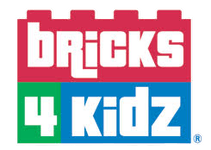The benefits of 3-D learning
For much of human history, human achievement was built in the real world — things we could touch, see, experience and feel. And we all know children build their brains through play and by interacting with the world around them. We also know how much they love technology. But what if something drawn on a screen can become real?
 3-D printers have become cheaper and easier to use, making them more available to even very young children at science camps, in classroom and in museums. By conceptualizing and experimenting with these printers, children can better understand STEM subjects (science, technology, engineering and math).
3-D printers have become cheaper and easier to use, making them more available to even very young children at science camps, in classroom and in museums. By conceptualizing and experimenting with these printers, children can better understand STEM subjects (science, technology, engineering and math).
Better engagement: When children use their hands and minds to build an object, concepts become real. Picture a student learning math through memorization. Then picture a different student designing the pieces of a building through 3-D modeling, printing these pieces on a 3-D printer, and arranging those blocks into a design. Through that process, the child is counting, categorizing, adding, analyzing and problem solving. Which student is going to gain a better understanding of the math?
Build critical-thinking skills: When kids learn 3-D modeling, they follow a cycle familiar to any engineer: design, prototype, test and redesign. As crazy as that candy-mountain spaceship may seem, it all began with a vision. And that has to be pursued with problem-solving skills to stop, back up and try another solution to make it work. And perhaps when something that seems like a great idea in theory doesn’t work out so well in practice, your child can identify the part of the design that isn’t right and come up with a new design for the failed piece, successfully putting critical-thinking skills into practice.
Builds focus: If that online puzzle is too difficult, it’s so easy to give up and switch to an easier game. But if a 3-D design fails, your child has already put in some effort and will be naturally motivated to give it another try. This push forward will teach them failure isn’t the end — that it can actually be a step forward. It takes time and patience to build this skill, and some children seem catch on to this more easily than others, but it’s absolutely worthwhile.
While this creativity can be applied in many fields, hands-on designing and building can help children establish the skills and perseverance that are important to careers in the STEM fields.
Our Valued Customers
"My son learned how to make his favorite dinosaur as a LEGO® robot at a party! He loves to go to Bricks 4 Kidz after-school classes now"
— Miranda K.Jacksonville, FL
We learn, we build, we play with LEGO® Bricks
Copyright © 2015 Bricks 4 Kidz. All rights reserved. PRIVACY POLICY | CORPORATE CONTACT
LEGO® and DUPLO® are registered trademarks of the LEGO® Group of companies which does not sponsor, authorize or endorse these programs or this web site.
